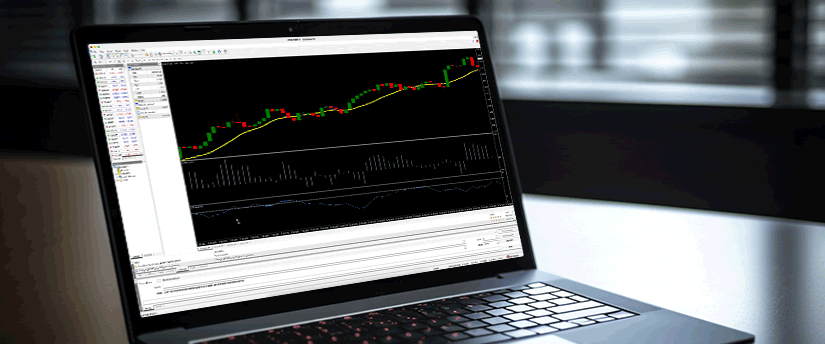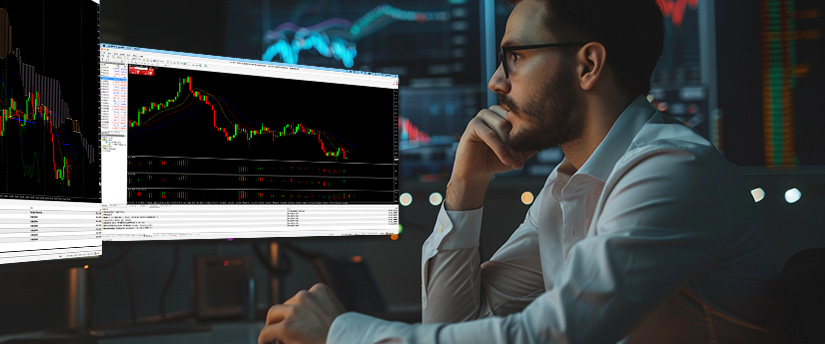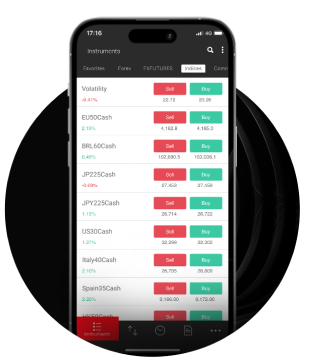Forex trading, short for foreign exchange trading, is the process of buying and selling currencies to make a profit. Over the years, it has become one of the most popular financial markets in the world. As more people become interested in trading, especially with the convenience of online platforms, many myths and misconceptions have emerged. In this blog, we’ll clear up some of the most common Forex trading myths and uncover fact from fiction. So, let’s look at some of the most popular forex trading myths.
Myth #1 Forex trading needs monitoring 24/7
The forex market is open 24/7 but that doesn’t mean you need to monitor it constantly. When trading forex, you should keep the following in mind:
Between 12:00pm and 4:00pm UTC, the US and UK markets overlap. This is the most active period for global trading and the best time to trade major currency pairs.
Between 2am and 4am UTC, Australia and Japan markets overlap. This is a good time to trade GBP/JPY, AUD/JPY, and EUR/AUD.
Between 5:30am and 8:30am UTC, New Zealand and Japan overlap. This is when you should trade NZD/JPY.
You can set alerts for your preferred entry points to take advantage of opportunities even when you’re not actively trading. You should also set up stop loss and take profit orders for your trades.

Myth #2 Overnight success in the forex market
There is no one who doesn’t want to get rich quickly. This is one of the biggest forex myths and comes from the story of George Soros, who is known as the “Man Who Broke the Bank of England.” In 1992, Soros short sold $10 billion worth of pound sterling and made a profit of $1 billion. This led to the GBP dropping steeply. That day is known as “Black Wednesday.”
However, stories like this are one in a billion. And the profit isn’t the end of the story either. Since then, Soros has faced multiple losses and successes, but nothing compares to that one single trade that made him famous. The only way to maximise your chances of success in forex trading is to do your research before opening or closing positions.
Wealth creation is a journey that begins with a solid foundation of knowledge and grows through consistent skill-building to keep up with changing markets.
Myth #3 All currencies are created equal
That’s not true at all. In fact, currencies can be put into three main groups: major, minor and exotic pairs. Only seven currency pairs account for about 85% of the forex market’s trading volume. These are the major currency pairs and one of the currencies will always be the US dollar.
Minors are formed by currencies of developed economies, except for the USD. The currencies of emerging and developing economies are known as exotic currencies.
What does all this mean for traders? Major currency pairs have the highest liquidity and, therefore, the lowest spread. On the other hand, minor and exotic pairs have wider price swings, which makes them more attractive for trading.
A well-balanced forex trading portfolio has a mix of all three types of currency pairs.
Myth #4 You can be right 100% of the time
After a few winning trades, it’s easy for traders to start thinking they can never be wrong. The truth is, though, that markets are unpredictable, and the factors that influence them can change quickly. Market conditions can also affect trader sentiment.

Even top traders, like Warren Buffet, have made mistakes and faced losses. The difference is that they learn from these experiences and use what they learn to improve their strategies. Richard Dennis, for example, made losses during the stock market crashes of 1987 and 2000. He learnt from them and kept going.
Accepting losses gracefully and learning from your mistakes is key to long-term success. The goal is to use a system that gives you a small advantage in the market, not from trying to win every time.
Myth #5 Complex Forex Trading strategies are more successful
Beginners who make returns quickly often become bullish too quickly. They want to increase their returns on every trade. To do this, they try to add more indicators to accurately time the reversals. This may not be the best way as using too many indicators can be confusing and slow down decision making.
You will learn more about forex trading as you gain experience. Even then, it’s best to keep your strategy simple and easy to follow. Use a system that works and make small changes to it as the market changes.
Myth #6 More trades mean more success
You cannot trade every opportunity. The more open positions you have, the higher your capital outlay and risk exposure will be. Also, trying to take advantage of every opportunity may exhaust you.
Having a strong strategy is better than frequency of trading. It’s just as important knowing when not to trade as it is to know when to trade. So, make sure your trading strategy aligns with your financial goals and risk appetite.
Myth #7 A “Holy Grail” strategy can guarantee success
Many traders think they need one perfect strategy that works in every market. In reality, adapting to changing conditions is the key to long-term success. Adjusting your strategy based on news events and economic data that impact your chosen currencies can improve your results – but over-optimising can backfire.
Testing strategies on a demo account can help you to understand which one works under specific market conditions.

Myth #8 Robots never fail at Forex Trading
These days, more and more traders of all skill levels are trying out AI-powered algorithmic trading. It can make trading easier, it saves time, helps you spot opportunities, and takes some of the stress out of constant monitoring – but automation doesn’t guarantee profits.
Technology can make trading faster and more precise, but it only if you give it the right information. In the end, what really matters is your own strategy, patience, and understanding of how the market works.
The most important part of algorithmic trading is back-testing. Implementing a well-tested system is only helpful when you configure it to your financial goals and risk tolerance.
Your automated trading system should be able to respond to changes in the market in a way that work best for your trading style. If you use algorithms developed by other traders, it’s very important to back-test and configure them to your trading goals and risk appetite.
Conclusion
To sum up, forex trading myths can make the market seem more intimidating than it actually is. Traders can make more informed decisions and improve their chances of success if they separate fact from fiction. No matter whether you’re a beginner or an experienced trader, you should always remember that the key to success in forex trading lies in education, discipline, and using the right strategies.
سلب مسئولیت: این اطلاعات به عنوان مشاوره سرمایه گذاری یا توصیه سرمایه گذاری در نظر گرفته نمی شود ، بلکه در عوض یک ارتباط بازاریابی است. IronFX هیچ گونه مسئولیتی در قبال داده ها یا اطلاعاتی که توسط اشخاص ثالث در این ارتباطات ارجاع و یا پیوند داده شده اند ندارد.
















